Pugs have been our companions for centuries. We just can’t get enough of their adorable wrinkly faces and charming personalities.
They are small dogs with big personalities. They always want to be the center of attention but will become lonely very easily.
This very popular breed is great with any type of owner – Pugs will love anyone and everyone!
Whilst they come in lots of different colors, the black Pug is adorable. They have shiny coats and chunky bodies.
TABLE OF CONTENTS
What is a Black Pug?
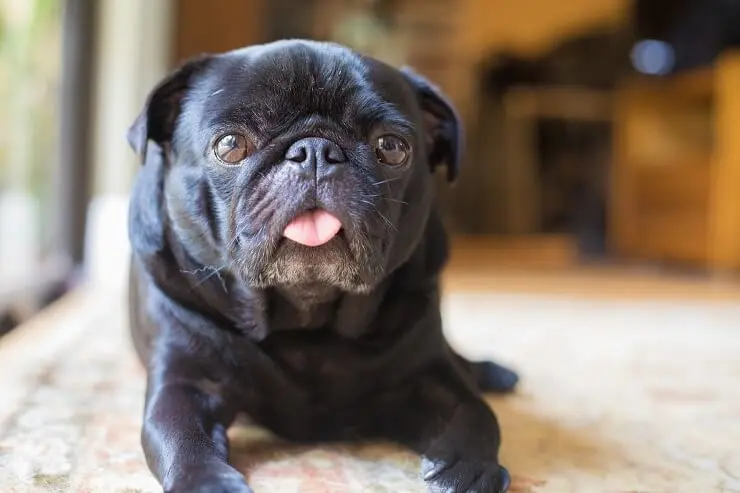
From Adobe Stock
Pugs originate from China and can be traced back 2000 years to wealthy families as a companion pet.
They became increasingly popular in European courts, mostly associated with the rich in the 16th and 17th centuries. It wasn’t until the 19th century that they arrived here in the US. The American Kennel Club recognized the breed in 1885 as part of the toy group.
The Black Pug is rarer than other colors. This color was originally seen as a birth defect and was unwanted; however Queen Victoria changed the game as she owned many black Pugs, making them popular and fashionable!
Pugs have a signature look. They have small, short legs and a barrel shaped body. They have a curled tail that will fall up on their back.
Their most famous feature is their short, wrinkly flat face and round head.
You should expect them to have large eyes and small ears that are folded and can be either rose or button shaped.
Height and Weight
The Pug is a small dog.
A fully-grown male Pug will reach around 11 inches tall and 15lbs. Whereas female Pugs are slightly smaller than males; fully grown females reach around 10 inches and 14lbs.
Coat
As the name suggests, these adorable Pugs are all black – their coats will shine a beautiful jet black.
Pugs have double coats meaning they have a smooth and short top layer of fur.
They shed more than you would think, loose fine hair will fall out regularly and they will shed heavily during the summer.
Black Pug Personality and Temperament

From Adobe Stock
Pugs are charming and affectionate – they get along with everyone they meet.
These dogs always want to be center of attention.
They don’t call this dog a lap dog for no reason – having a nap in your lap is their favorite past time. Even though they love to nap, they also love to play. You will often find them running around and playing with their favorite human.
This pup is very pet friendly, they are great with small pets and animals and don’t have a prey drive.
They do not like any type of extreme weather, keep them in from the cold and keep them cool in the hot summer months.
Due to their flat faces, they are prone to snore!
Their devotion to you and your family can cause them to develop separation anxiety. They want to be center of attention, and when their family is not home they will become destructive.
They may whine and cry, and also start chewing shoes and furnishings out of frustration. It’s best to not leave them alone for too long!
Is a Black Pug a Good Family Dog?
Pugs are great with kids. They love to play with children and will be the perfect addition to any family. Just remember it’s important to teach your kids dog body language.
Caring for a Black Pug

From Adobe Stock
The black Pug is for families that want an easy going dog, who will want to snuggle up to you most of the time. This does not mean they won’t be active, because they have more energy than you think!
Their grooming routine is simple and effective.
They will like any type of house; apartments in urban areas or large houses in small towns, they don’t mind!
Exercise Requirements
Your Pug won’t need too much exercise each day. Around 40 minutes of activity a day will do them just fine.
They are very playful dogs, so make sure to play with them when they start to become restless.
You can take your Pug to dog parks, beaches or lakes. We recommend you use a harness when walking them, rather than a traditional lead.
Change up their walking route every now and then, new sights and smells can be very enriching for your pooch. It is very boring to walk the same route each day, for both you and your Pug.
Grooming and Shedding
You may not think that the Pug sheds, but they do!
They will shed loose fine hairs throughout the day. Only bathe them when they are particularly messy or have a doggy odor about them.
Their face wrinkles need to be washed regularly with a damp cloth, this will clean dirt and sweat away. Make sure to dry them properly! Not cleaning them regularly will cause infections and buildup of bacteria.
Trim their nails and clean their ears. Brush their teeth regularly to avoid dental issues.
As for brushing, once a week will be fine.
How to Train
The Pug is very intelligent, but they can be a bit difficult to train – they are very willful and stubborn.
Once you get to know their likes and dislikes they are trainable.
They can become bored of their dog training regimen, so make sure to mix it up for them. Positive reinforcement is best to train any dog. Don’t give them too many treats when training them, instead give them praise or play with them.
Play can increase memory and relive stress for your pooch, be sure to use this to your advantage when training them.
Early socialization is important with any dog, make sure to introduce your pooch to a range of people and other animals. It is assumed a Pug will get along with everyone, however socialization isn’t just about meeting people, its about exposing them to new sounds, smells and experiences.
Smaller dogs are prone to being more nervous, so its best to let them know the big washing machine or loud noises like the vacuum won’t hurt them.
Mental stimulation is important for a dog with this intelligence. They have a playful personality and love when their family plays with them.
Whether it is a tug-of-war or a complex puzzle feeder, they love play time!
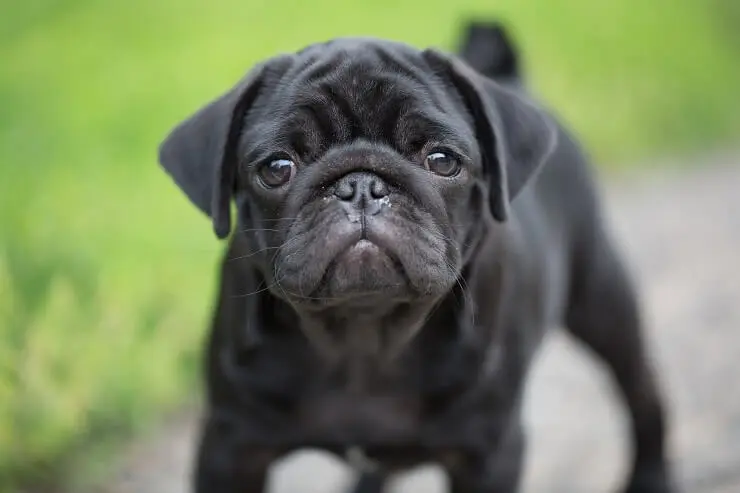
From Adobe Stock
Feeding and Diet
The Pug is prone to developing obesity, so be sure not to over feed them.
You should divide your Pug’s meals equally, and feed them 2 times a day. Dogs love routine, so feed them at the same time each day.
It’s best to feed Pugs dry foods, as wet food can lead to runny stool and is not good for the teeth.
How much you feed them depends on their weight and activity levels. Pugs should not be fed more than 1.5 cups of kibble.
When training your Pug, make sure you give them wet low calorie treats. They will love them, and it helps maintain their weight.
Commercial dog food is a large business and it’s easy to get lost in all the brands. Stick to food that is for small dogs, that have low amounts of wheat and corn syrup and that are mostly natural.
Known Health Problems
The Pug is a purebred that has many health issues.
They are infamous for their flat face. It makes them cute, but it also comes with a number of problems.
The flat face of the Pug means they are more prone to breathing issues and respiratory complications (known as Brachycephalic Airway Syndrome). This is caused by not having enough room in the airway, obstructions caused by their narrow nostrils or a small windpipe.
Remember that their breathing issues can become worse in hot weather, so it’s best to keep them cool.
They are prone to suffering from luxating patella, which is where the knee cap dislocates, causing pain and problems walking.
Pugs are also prone to suffering from minor conditions such as allergies, ear infections, eye disorders and dental problems. It’s best to keep an eye on their general health to avoid these becoming major concerns.
Their face wrinkles can be particularly prone to skin infections if not cleaned properly.
These health issues may seem scary, but all you have to do if keep your Pug healthy, give them lots of love and take them to the vet regularly.
A healthy Pug should live up to 15 years.
How Much Does a Black Pug Cost?
A healthy black Pug from a reputable breeder will cost $500-$1000.

From Adobe Stock
Quick Breed Summary Table
| Breed Characteristics | |
| Size: | 10-12 inches |
| Weight: | 13-15 lb |
| Lifespan: | 12 to 15 years |
| Coat: | Short, double coat that is smooth and fine |
| Color: | Jet black all over |
| Do They Shed: | They will shed throughout the year and more during the summer |
| Temperament: | Affectionate, loves attention and mischievous |
| Intelligence: | Very intelligent |
| Socialization: | Generally good with people and other animals, but will need socialization |
| Destructive Behavior: | Will chew things when lonely and frustrated |
| People Skills: | Great with people, welcoming to strangers |
| Good with Children: | Will love to play with children |
| Activity Levels: | Very playful and energetic for their size (40 minutes each day) |
Summary
This breed is suited for anyone, as long as you put in the time and effort to give them what they need.
Pugs can be needy, so can suffer from separation anxiety – do not leave them alone for too long!
They are playful and energetic, so keep them enriched by changing things up, try out new toys and puzzle feeders. Take them on different walking routes or try to teach them tricks.
These charming and playful dogs will be a great addition to any household!

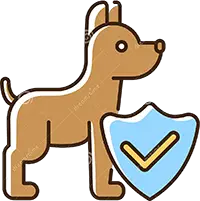
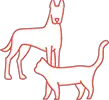
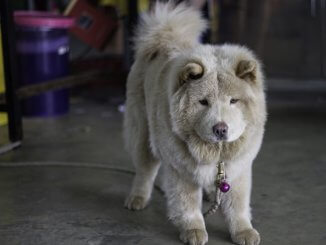

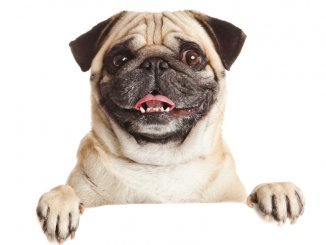
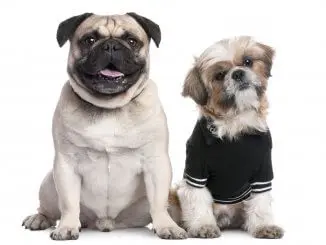
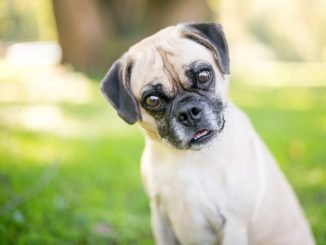
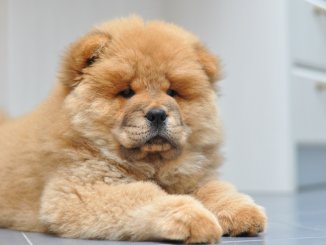
Be the first to comment